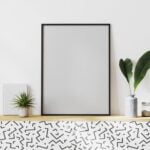Are you looking to create a cozy and clutter-free living space? In this article, we will explore how to decorate a home with minimal furniture to achieve a minimalist home decor style. Minimalist home decor focuses on simplicity, functionality, and creating a calming environment. By incorporating the principles of minimalism into your home decor, you can enjoy a space that feels open, serene, and visually appealing.
Assessing your space is essential when decorating with minimal furniture. We will provide you with tips for evaluating the available space in your home and determining the essential furniture pieces needed to maintain functionality without overcrowding the area. Additionally, we will discuss the importance of choosing multi-functional furniture that serves multiple purposes to maximize space and minimize clutter.
Furthermore, we will explore creative ideas for using wall art, shelving, and mirrors to add visual interest without relying heavily on furniture. By selecting neutral color schemes and incorporating textures and patterns, you can create a cohesive and serene atmosphere while adding depth and personality to the space.
Additionally, maximizing natural light and adding greenery are key aspects of minimalist home decor that we will delve into in this article. Whether you are downsizing or simply looking for a more simplistic approach to decorating your home, embracing minimalism can bring peace and harmony to your living space.
Assessing Your Space
When it comes to decorating a home with minimal furniture, the first step is to assess the available space and determine the essential furniture pieces needed. This process involves evaluating the size and layout of each room in your home to make informed decisions about what furniture is necessary for both functionality and aesthetic appeal. By taking a thoughtful approach to assessing your space, you can create a minimalist home decor that feels inviting, practical, and visually appealing.
One important tip for evaluating your space is to consider the specific activities that will take place in each room. For example, if you are furnishing a living room, you may need seating options such as a sofa or sectional, along with a coffee table and storage solutions.
In a bedroom, focus on essential pieces like a bed frame, dresser, and bedside tables. By identifying the primary functions of each room, you can prioritize furniture pieces that serve those purposes while minimizing unnecessary clutter.
In addition to considering the functional needs of each room, it’s also crucial to take measurements of the available space. Understanding the dimensions of your rooms will help you choose appropriately sized furniture that fits comfortably within the layout.
This step is especially important when dealing with smaller or oddly shaped spaces where every inch counts. By carefully measuring your space and considering the activities that will occur within it, you can confidently determine the essential furniture pieces needed to create a well-balanced minimalist home decor that maximizes both style and functionality.
Choosing Multi-Functional Furniture
When decorating a home with minimal furniture, it’s important to carefully select pieces that serve multiple purposes in order to maximize the available space. Choosing multi-functional furniture not only helps in saving space but also adds versatility to the decor. Here are some recommendations for furniture pieces that can serve multiple purposes:
- Sleeper sofas or futons: These are great options for the living room or guest room, serving as both seating and a sleeping area when needed.
- Storage ottomans: Not only do they provide extra seating, but they also offer valuable storage space for blankets, pillows, or other items.
- Drop-leaf tables: Ideal for small dining areas, these tables can be expanded for entertaining guests and folded down to save space when not in use.
- Murphy beds: Perfect for smaller bedrooms or studio apartments, Murphy beds can be tucked away during the day to free up floor space.
By incorporating these multi-functional furniture pieces into your home decor, you can make the most of your space while still maintaining a stylish and clutter-free environment.
In addition to selecting multi-functional furniture, it’s important to consider the scale and proportion of each piece to ensure that it fits well within the overall design of the space. This will help prevent the room from feeling crowded or overwhelmed by furniture. By carefully choosing versatile pieces that complement each other in both form and function, you can achieve a cohesive and practical aesthetic in your minimalist home.
Ultimately, when deciding on which multi-functional furniture pieces to include in your home decor, prioritize quality over quantity. Investing in well-made and durable pieces will not only enhance the functionality of your space but also contribute to a timeless and lasting appeal.
Utilizing Wall Decor
When decorating a home with minimal furniture, it’s essential to maximize visual interest through the use of wall decor. By creatively utilizing wall art, shelving, and mirrors, you can elevate the aesthetic appeal of your space while maintaining a clean and uncluttered look. Here are some creative ideas for using wall decor effectively:
- Gallery Walls: Create a gallery wall by displaying a collection of artwork, photographs, or framed prints. This arrangement can serve as a focal point in a room and add personality to the space.
- Functional Shelving: Install floating shelves or minimalist wall-mounted shelves to both display decorative items and provide storage for everyday essentials. This approach keeps items off surfaces and maintains a streamlined appearance.
- Mirrors: Incorporating mirrors into your wall decor is an effective way to enhance natural light and create the illusion of more space. Consider placing mirrors strategically to reflect light and visually expand the room.
By incorporating these creative ideas into your minimalistic home decor, you can transform your walls into visually appealing elements that contribute to the overall design scheme.
Additionally, consider integrating a mix of textures and materials within your wall decor to add depth and dimension to the space. Combining different elements such as wood, metal, or fabric can create visual interest without overwhelming the room with excessive furniture.
Remember that when using wall decor in a minimalist setting, less is often more. Avoid overcrowding the walls with too many items, and instead focus on carefully selected pieces that contribute to the overall aesthetic in a meaningful way.
Ultimately, by thoughtfully incorporating wall art, shelving, and mirrors into your minimalist home decor, you can achieve a balanced and visually engaging space that reflects your personal style while complementing the minimal furniture layout.
Selecting Neutral Color Schemes
When it comes to decorating a home with minimal furniture, selecting the right color scheme is essential in creating a cohesive and serene atmosphere. Neutral colors are often the go-to choice for minimalist spaces as they can help bring a sense of calm and simplicity to the home. Colors such as white, beige, gray, and soft pastels can create a feeling of openness and tranquility, which are key elements of minimalist design.
One way to incorporate neutral color schemes into your home is by choosing furniture pieces and decor items in these tones. Opt for sofas, chairs, and tables in neutral hues, and complement them with simple yet elegant accessories such as throw pillows, rugs, and curtains. By sticking to a neutral color palette for your larger furniture pieces, you can create a sense of visual continuity throughout the space.
In addition to furniture and decor items, wall paint or wallpaper is another important aspect of creating a cohesive color scheme in a minimalist home. Neutral wall colors can help make the space feel larger and more open, while also providing a versatile backdrop for other design elements. To add depth and interest to the walls without overwhelming the space with clutter, consider using different shades of neutral colors or incorporating subtle textures such as grasscloth or linen wallpapers.
Finally, when working with a neutral color scheme in a minimalist home, it’s important to pay attention to lighting. Natural light can enhance the beauty of neutral tones and create an airy ambiance. Consider using light-filtering window treatments or sheer curtains to allow sunlight to flow into the room while maintaining privacy.
| Neutral Color Schemes | Cohesive & Serene Atmosphere |
|---|---|
| Neutral colors create a calming effect | Choosing furniture pieces in neutral hues |
| Neutral wall paint makes space feel open | Use different shades of neutral colors for depth |
| Natural light enhances beauty of neutrals | Consider light-filtering window treatments |
Incorporating Textures and Patterns
When decorating a home with minimal furniture, incorporating textures and patterns is essential to add depth and personality to the space. While minimalist design often focuses on clean lines and simplicity, adding textures and patterns can prevent the space from feeling stark and sterile. By carefully selecting textiles, materials, and decor items, you can create visual interest while maintaining a streamlined aesthetic.
One way to introduce textures in a minimalist home is by incorporating natural elements such as wood, rattan, or stone. These materials add warmth and tactility to the space without overwhelming it with unnecessary clutter.
For example, a wooden coffee table or a woven jute rug can introduce texture while still maintaining a clean and simple look. Additionally, incorporating tactile fabrics such as linen, wool, or velvet in neutral tones can also add visual interest without detracting from the minimalist design.
In terms of patterns, it’s important to use them sparingly and thoughtfully in a minimalist space. Opt for subtle patterns such as geometric prints or small-scale motifs rather than bold and busy designs.
Consider using patterned throw pillows, area rugs, or artwork to introduce visual variety without overwhelming the space. It’s also important to maintain a cohesive color palette when incorporating patterns into a minimalist home to ensure that they complement rather than clash with the overall decor scheme.
When designing a minimalistic interior with minimal furniture involved in your home’s approach think about ways you could energize your interiors whether simply making an addition of some bright colored rugs on hardwood flooring space for an added youthful feel.
Maximizing Natural Light
Strategic Placement of Mirrors
One effective way to enhance natural light in your home is by strategically placing mirrors in areas where they can reflect sunlight. Placing mirrors opposite windows or glass doors allows them to bounce natural light around the room, making it feel brighter and more spacious. Additionally, choosing mirrors with clean and simple frames aligns with the minimalist aesthetic while still serving a functional purpose.
Sheer Window Treatments
When choosing window treatments for a minimalist interior, opt for sheer curtains or blinds that allow plenty of natural light to filter through. By using lightweight and transparent fabrics, you can maintain privacy while still maximizing natural light. Avoid heavy drapes or dark-colored curtains as they can block out valuable sunlight and create a more closed-in feeling.
Light-Reflective Surfaces
Incorporating light-reflective surfaces such as glossy finishes on furniture, flooring, or decor items can also contribute to maximizing natural light in your home. These surfaces bounce light around the room, helping to illuminate darker corners and create an overall brighter ambiance. When selecting furniture and decor pieces, look for materials like glass, polished metal, or high-gloss finishes to enhance the luminosity of your space.
By implementing these strategies for enhancing natural light in your home, you can effectively create an airy and open feel that complements a minimalist design aesthetic. Whether it’s through strategic placement of mirrors, sheer window treatments, or incorporating light-reflective surfaces, maximizing natural light is essential for achieving a brighter and more expansive living space with minimal furniture.
Adding Greenery
When it comes to decorating a home with minimal furniture, incorporating greenery is essential to bring life and vibrancy to the space. Indoor plants not only add a touch of nature but also have numerous health benefits. In this section, we will explore the importance of adding greenery to a minimalist space and provide tips for selecting the right plants.
The Benefits of Indoor Plants
Indoor plants are known to improve air quality by reducing carbon dioxide levels and increasing humidity. They also have been shown to reduce stress, boost creativity, and even improve concentration and productivity. In a minimalist home where furniture and decor are kept simple, indoor plants can act as natural focal points, bringing visual interest and creating a calming atmosphere.
Selecting the Right Indoor Plants
When choosing indoor plants for a minimalist space, it is important to consider the lighting conditions and care requirements of each plant. Low-maintenance options such as snake plants, pothos, or spider plants are ideal for those with busy schedules, while succulents thrive in bright light and require minimal watering. Consider using modern planters or hanging pots to seamlessly integrate the greenery into your minimalist decor.
Integrating Greenery Into Minimalist Design
Incorporating indoor plants into a minimalist space can be done strategically. Consider placing larger floor plants in empty corners or using small potted plants on shelves or tabletops as accents. Grouping different sizes of plants together can create visual interest without cluttering the space. Additionally, hanging plants near windows or from the ceiling can maximize natural light and add an element of verticality to the room.
By carefully selecting indoor plants that complement your minimalist design aesthetic and integrating them thoughtfully into your home, you can truly enhance the overall ambiance of your space without overcrowding it with unnecessary furnishings.
Conclusion
In conclusion, decorating a home with minimal furniture can bring a sense of calm and simplicity to your living space. By carefully assessing your space and choosing multi-functional furniture, you can maximize the use of each piece while maintaining an open and uncluttered environment. Utilizing wall decor, neutral color schemes, textures, and patterns can add visual interest without overcrowding your home.
One of the key takeaways from this approach is the importance of maximizing natural light and incorporating greenery to create an airy and vibrant atmosphere. By allowing ample natural light to enter your home and adding indoor plants, you can enhance the overall aesthetic and create a connection with nature within your living space. These simple yet impactful elements can transform even the smallest of spaces into a welcoming and soothing environment.
In essence, decorating a home with minimal furniture is not about sacrificing style or comfort, but rather about embracing simplicity and functionality. By following these tips and incorporating these elements into your design approach, you can create a peaceful sanctuary that reflects your personal style while promoting relaxation and tranquility within your home. So whether you’re downsizing or simply looking for a more streamlined living space, remember that less can truly be more when it comes to interior design.
Frequently Asked Questions
How Can I Decorate My House With Simple Things?
You can decorate your house with simple things by focusing on decluttering and using a minimalist approach. Opt for clean lines, neutral colors, and functional furniture to create a sense of calm and space in your home.
What Is Minimal Style in Interior Decoration?
Minimal style in interior decoration is characterized by simplicity, functionality, and clean lines. It involves using a limited color palette, uncluttered spaces, and minimal ornamentation to create a sense of serenity and order in the home.
Do Minimalists Have Decor?
Yes, minimalists do have decor, but they tend to opt for functional and meaningful pieces that serve a purpose or hold sentimental value. They prioritize quality over quantity and choose items that contribute to the overall aesthetic of simplicity and tranquility in their living space.

I’m thrilled to be your companion on this exciting journey through the world of home decor and design. With a passion for turning houses into homes and a keen eye for the finer details, I’m here to help you transform your living spaces into beautiful, functional, and meaningful havens.





